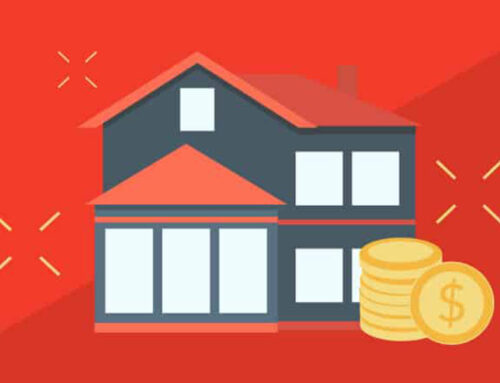I recently bought a single-family home in Fountain Square to renovate and resell because I love the area’s artistic vibe. It appeals to creative Millennials looking for their first home to own but also to old hats like me who prefer culturally diverse neighborhoods with a lot of energy—and a lot of good food. While visiting the house the other day to check on the rehab, one of the young neighbors, Aaron, approached me about the project. He was curious about whether I intended to rent out the property or sell it when I finished as well as how it is I find Indianapolis investment properties for sale in the first place. Without coming right out and saying so, I could tell he was curious about how to get started investing in real estate at a young age—something I highly encourage. So, I walked him through the property and my intentions for it. Then, I walked him through how he can find one—or several—of his own.
Finding the Best Indianapolis Investment Properties
As is the case with most cities, the real estate market trends in Indy can ebb and flow depending on what’s happening with the local economy and, to some degree, the national economy. And, at the moment, things look great on both fronts—especially for Indianapolis. Unemployment, currently at 3.4%, is low in the Circle City area, according to the Bureau of Labor Statistics and, if Amazon decides to move Seattle’s sister headquarters here, that number could drop further. Even without Amazon, the city’s job market continues to expand thanks to corporate giants, like Angie’s List, moving in. With increased employment opportunities, and an overall lower cost of living, comes new residents who will either buy or rent. So, the city itself tends to be trending—and that’s a good thing if you’re a real estate investor.
Knowing which market sector to invest in to meet the growing demand for housing, however, can be confusing. I’ll walk you through the opportunities and risks that I shared with Aaron so that you can keep pace with the trends too.
Luxury Properties
Not typically known for having a strong luxury market, sales in this sector have been higher than ever for greater Indianapolis in recent years. In the last five years alone, homes selling for one million dollars or more increased by more than 140%, according to the Indianapolis Business Journal. Already attractive as an investment strategy for some deep-pocketed real estate investors, these statistics have helped to widen the appeal of luxury housing. And, it’s not hard to see why. Even at a high cost to purchase, if the After Repair Value (ARV) on your investment property is significantly higher, it’s possible your returns will be too. So, getting in on the action—while it’s still hot—could be a big boost to your bottom line.
Just how long the luxury market will stay hot, however, is up for debate—as is its overall appeal as a strong investment strategy. Generally speaking, this sector is more volatile than others. So, when you buy and sell is critical to consider. Otherwise, you might find yourself trying to offload a property when luxury housing stops trending and having to sacrifice potentially high returns just to get it off the books. Knowing exactly when the luxury market will shift is hard to predict so you’re taking a risk anytime you buy in this sector.
Multi-family Properties
Just over a year ago, business news outlets, like Forbes, declared Indianapolis one of America’s best cities to rent in, with an average rent that is less than 20% of the median household income. The affordability of renting in the Circle City is high and that helps to keep our vacancy rates pretty low, which is a big plus for investors since the holding costs for multi-family units aren’t cheap. After all, the main reason for buying and renovating multi-family is the prospect of receiving passive income once all expenses, including the mortgage and insurance payments, are met.
Unfortunately, when weighing the pros and cons of being a landlord, the drawbacks loom large—even in Indianapolis and, perhaps, especially here. Lower-than-average rents are great for tenants. But, unless your holding costs are a lot lower than what you can realistically charge for rent, then your income won’t be worth much. Plus, low vacancy rates don’t always equal low turnover. Sure, you may not have any trouble renting your units out, especially in trendy areas like Broad Ripple Village, but you’ll still have to cover the costs of doing it. That includes any repairs or updates that are required, in addition to advertising fees and your normal holding costs. Your expenses, and hassles, don’t stop there either. Property maintenance for multi-family is ongoing, as are the late night tenant calls, the possibility a renter won’t pay, and the fear that when you’re ready to sell, the market won’t support your price.
Single-family Homes
Unlike other types of investment options, buying, renovating, and selling single-family residences (SFRs) almost always holds an opportunity to realize potentially good returns. At the front end, the amount you’ll have to spend to buy a property will typically be less than what you’ll pay for either luxury housing or multi-family units. Your rehab costs will usually be lower too. On the back end, the probability of selling a renovated house at a profit is higher than in other sectors. Not only is the timeline for getting in and out of SFRs as shorter—allowing you to take advantage of current market conditions—the desire for homeownership rarely waivers when the economy is good. Here in Indianapolis, for example, median home sales prices jumped another 8.6% since this time last year, according to the MIBOR Realtor® Association, and sellers are getting over 97% of their asking price. Those kinds of numbers indicate a strong demand among home buyers, as well as a healthy direction for you to take your investment strategy.
Obviously, I think that buying investment property in Indianapolis to rehab and resell is easier and, potentially, more profitable than other investment niches. Assuming you have a way to get off-market motivated home seller leads, whether their properties are downtown or in Butler-Tarkington, you have a way to get into—and succeed at—investing in this sector. Without regular qualified leads on single-family homes even this option won’t get you—or your business—anywhere either.
How to Get Better Leads in One of America’s Best Cities
I was about Aaron’s age when I started buying, renovating, and selling houses in Indianapolis. Initially, I thought about buying and holding multi-family properties—mostly because it seemed like a good introduction to real estate investing. But, because I got so many great leads on SFRs as an independently owned and operated HomeVestors®’ franchisee, I put those deals on the back burner. Thanks to HomeVestors®’ marketing tools and lead generation resources that rank among the best, like the “We Buy Ugly Houses®” national ad campaign, the qualified leads on single-family homes keep coming—and my business in the Circle City keeps growing.
No matter your age, start your real estate investment career with deals on distressed SFRs that can help you build your business fast. Contact HomeVestors® about your options for getting better-qualified leads on the best opportunities in Indianapolis today.
Each franchise office is independently owned and operated.
Contact
"*" indicates required fields




